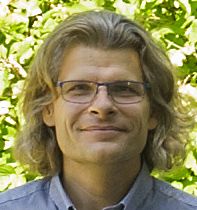Dr. Marcus A. Neumann
Current title and position: CEO of Avant-garde Materials Simulation (AMS)
Research field: Crystal structure prediction
Dr. Marcus A. Neumann has a M.Sc. in Physics from the Heinrich-Heine University in Düsseldorf, Germany, and holds a Ph.D. in Physics from the University of Grenoble, France.
He joined Materials Simulation Ltd. in Cambridge, UK, as product specialist for crystallisation and analytical simulation in 1999 and was promoted to product manager in 2001. At Materials Simulation then become Accelrys, Dr. Neumann invented the X-Cell algorithm for powder indexing.
In 2002 Dr. Neumann founded Avant-garde Materials Simulation SARL, a French company specializing in the development of novel methodology for Crystal Structure Prediction (CSP) and opened a fully owned subsidiary, Avant–Garde Materials Simulation Deutschland GmbH, in Freiburg, Germany, in December 2007.
Dr. Neumann has pioneered modern CSP and turned it into a standard technique used by a large number of pharmaceutical companies world-wide.
Lecture 15: Marcus A. Neumann
Detecting and avoiding disappearing polymorph cases by crystal structure prediction
Marcus A. Neumann
Avant-garde Materials Simulation Deutschland GmbH
Ritonavir and rotigotine are famous examples of disappearing polymorph events, with the late appearance of a new crystal form of a drug compound disrupting production or increasing time-to-market. Based on a thorough and critical analysis of the commercial crystal structure prediction studies of 41 pharmaceutical compounds with the GRACE software package, it can be concluded that for between 15 to 45% of all small-molecule drugs currently on the market the most stable experimentally observed polymorph is not the thermodynamically most stable crystal structure and the appearance of the latter is kinetically hindered.
In recent years it has become possible to detect missing, substantially more stable and hence less soluble crystal forms by crystal structure prediction. A new energy calculation protocol, named PBE0+MBD+Fvib, now offers improved accuracy approaching 1 kJ/mol. It helps to remove false positives and confirms missing, more stable forms beyond doubt. The new method also allows for the prediction of the hydration state of a crystalline drug substance as a function of water activity and temperature, thus enabling the prediction of late appearing hydrates.
To assess the risk of having missed a more stable crystal form, the experimental crystal structures need to be placed on the crystal energy landscape in the first place, i.e. their crystal structures need to be solved. For this purpose, a high-throughput method has been implemented in GRACE that screens experimental patterns against extensive lists of predicted crystal structures, allowing for the structure elucidation of disordered crystal structures and phase mixtures.
When applied to entire portfolios, CSP helps to focus experimental screening efforts on high-risk compounds, provides opportunities for rational crystallization experiment design and makes it possible to avoid salts or co-crystals with risky crystal energy landscapes.


